
|

|

|

|
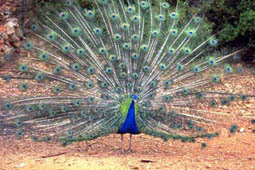
|

|
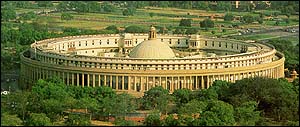
|
National Symbols
You have heard the national anthem and learned about the flag of India, but what else symbolizes this vast and diverse nation? Even with all its differences, there are still some images and ideas that unite the people and represent their shared country.

| The National Symbol of India comes from the Sarnath Lion Capital of Emperor
Ashoka. Ashoka ruled the land from 272 BCE to 232 BCE. The original sculpture shows four lions on a pillar
with an elephant, horse, bull, and lion separated by a lotus on the base. A Dharma Chakra (wheel of law) is also
carved into the stone.
The emblem was adopted on January 26, 1950 by the Indian Government. The official symbol now shows three of the four lions with the Dharma Chakra in the center of the base and a bull and horse on either side. The base is also engraved with the phrase "Satyameva Jayate" in the Devanagari script of India. This simple phrase represents a powerful idea for the Indian people: "Truth alone triumphs". |
 |

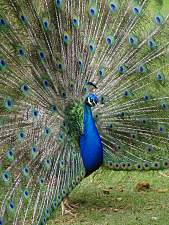 |
The National Bird is the Indian peacock (Pavo cristatus). Peacocks symbolize grace, pride,
and beauty. They are a sign of joy for all who see them. Peacocks are often used in Indian
mythology and folk stories. This bird is about the size of a swan, with a long neck and a fan-shaped array
of feathers. Male peacocks are brightly colored,
with blue fronts and green-bronze feathers. The female (peahen) is smaller and brown in color.
The peacock may be found throughout India, especially south and east of the Indus River. It is heavily protected under the Indian Wildlife Protection Act of 1972. It also enjoys great sentimental protection from the nation at large. |

| The National Animal is the tiger, officially known as Panthera tigris.
It is respected in India for its strength and grace, as well as its incredible power. The Indian
tiger is also called the Royal Bengal Tiger.
Indians are conscious of the threat that hunters and others pose to this special animal. Although once popularly killed for its skin, there is now a movement to protect the tiger population. To this end, the government began "Project Tiger" in 1973. The project is also supported by the World Wildlife Federation. This project has created a network of tiger reserves throughout the country and implemented a plan to help tigers and humans coexist. India is working hard to preserve its national animal, but sadly, only 2,000 to 2,500 tigers remain. |
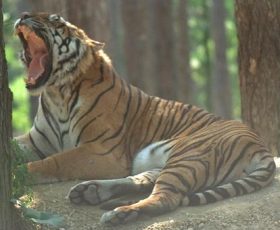 |

 |
The lotus is the official flower of India. It represents long life, honor, and good fortune.
It is also a symbol of triumph, since the lotus is rooted in the mud and can survive to regerminate
for thousands of years. Even though it grows in mud, it remains pure and produces beautiful flowers. Thus,
it symbolizes purity of heart and mind.
The lotus holds additional significance for Hindus, as it is a symbol of God and used often in religious practices. |

| The National Tree of India is the banyan. This huge tree towers over its neighbors and has the
widest reaching roots of all known trees, easily covering several acres. It sends off new shoots from its
roots, so that one tree is really a tangle of branches, roots, and trunks. The banyan tree regenerates and lives for
an incredible length of time--thus it is thought of as the immortal tree.
Its size and leafy shelter are valued in India as a place of rest and reflection, not to mention protection from the hot sun! It is still the focal point and gathering place for local councils and meetings. India has a long history of honoring this tree; it figures prominently in many of the oldest stories of the nation. |
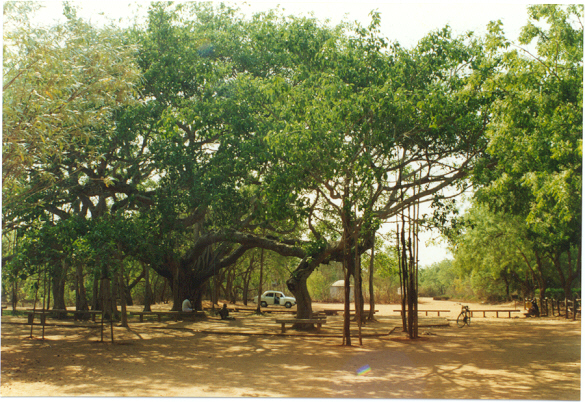 |

 |
The mango is the national fruit. It has been cultivated in India since time
immemorial. There are over 100 varieties of mangos in India, in a range of colors, sizes,
and shapes. Common in the tropical part of the world, mangos are savored for their sweet juice and
bright colors.
People in India eat mangos ripe, or prepare them green as pickles or chutneys. They are rich in vitamin A, C, and D. |
Welcome to India (at http://www.Welcometoindia.com) for information on national symbols
"India: A Dynamic Democracy" (A Government of India Publication) for more help
